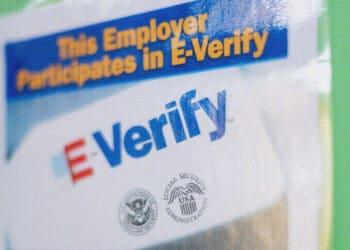Enforcement shifts are rumbling in Washington regarding a section of the Affordable Care Act. New actions could find your business exposed. Kyle Scott discusses four ESRP developments to keep an eye on.
With the U.S. Supreme Court throwing out the lawsuit against the Affordable Care Act (ACA) in June – thereby guaranteeing the ACA’s continuation as law of the land – compliance professionals should be aware that there are kettles brewing in Washington that could cause America’s corporations to face tens of millions of dollars in IRS penalties for not complying with the act’s Employer Shared Responsibility Payments (ESRP) provision:
- Proposed sunsetting of the good faith reporting standard,
- The Biden administration continuing to propose an increase in the IRS budget to ensure compliance with tax laws by corporations (along with high-income individuals),
- The IRS declaration that there is no statute of limitations for ACA ERSP, and
- The Treasury Inspector General for Tax Administration (TIGTA) placing public pressure on the IRS to collect more in ACA ESRP penalties.
A closer look at each of these bubbling cauldrons shows how they can affect your ACA compliance.
Proposed Sunsetting of the Good Faith ESRP Reporting Relief
When the ACA was established more than 10 years ago, the IRS initiated what is known as good faith relief – a grace period to assist employers temporarily as they became familiar with the ESRP reporting process and form furnishment requirements. This grace period exempted eligible employers from penalties for certain missing or inaccurate information.
Eligibility for relief under the good faith standard required that the employer makes a reasonable, good faith effort to gather required data, transmit 1094/1095 forms to the IRS, furnish forms to taxpayers and comply with ESRP regulations. In late 2020, the IRS indicated its intention to discontinue good faith relief for future reporting, unless it received persuasive public comment to the contrary.
Sunsetting of good faith relief could increase employer penalties drastically for those whose forms are not fully complete and accurate by IRS standards (including SSN/TIN data) by the IRS form submission deadline. Furthermore, penalties can be assessed for incorrect forms furnished to taxpayers. Today each situation carries a penalty of $280 per return, increased to $550 per return if noncompliance is intentional. Penalties are capped based on filing date and company revenue, with a maximum of just over $3.3 million, unless there is intentional noncompliance (for which the cap is removed).
Increased Funding Requested for IRS Enforcement of the ACA
President Joe Biden requested a substantial increase in funding for IRS enforcement of the ACA as part of his April 9 Fiscal Year 2022 discretionary request. Included in his request is $13.2 billion in funding for the IRS, which is about a $1.2 billion (10.4 percent) increase over the 2021 fiscal year. About $900 million of this request would be for increased tax enforcement resources.
The measure was for a time bundled with President Biden’s infrastructure bill. When the deal moved forward with bipartisan support, however, increased funding for the IRS was dropped.
It’s clear the Biden Administration remains keen to increase funding to close the tax gap. While its implementation remains in limbo, it could enable the IRS to do the following as part of a multi-year approach:
- Increase compliance oversight of corporations,
- Increase tax revenues and
- Deploy additional resources to assess compliance/noncompliance by employers that are under the ACA Employer Mandate.
Resource advancements also could include:
- Changes to ACA compliance validation systems,
- Increased penalty assessment and enforcement of ACA ESRP for employers who failed to submit reporting, as well as those who submitted reports but filed them with inaccurate information, and
- Increased penalty collection enforcement.
Lack of a Statute of Limitations for ACA ESRP Compliance and Reporting
In February 2020, to the surprise of many in the industry, the IRS Office of Chief Counsel concluded that there is no statute of limitations on ACA ESRP compliance and reporting. Prior to this announcement, it was commonly believed that there was a three-year statute of limitations from the date of 1094/1095 form filing, but the IRS concluded that the three-year limitation does not apply.
Furthermore, ESRP regulations do not specify a separate statute-of-limitations period. The lack of a statute of limitations means that the IRS could assess ESRP penalties upon employers at any point in time, which makes compliance by IRS deadlines and the ability to prove past compliance more important than ever.
Premium Tax Credits Administration
Several factors in the way in which premium tax credits are being administered also have the potential to cause employers plenty of ACA compliance headaches.
To begin with, the marketplaces have experienced difficulties in properly awarding advanced premium tax credit subsidies. In fact, the IRS estimates that approximately 27.4 percent, or $540.9 million in total premium tax credits (PTCs), were improperly awarded in tax year 2019. Employees may receive premium tax credits for which they are not eligible due to the employer having made an affordable offer of coverage or due to inaccurate employee subsidy information (e.g., inaccurately estimating household income).
Additionally, more employees will be eligible for premium tax credits for tax year 2021-22, due to the removal of the 400 percent federal poverty level maximum income threshold for subsidy eligibility. Additional special enrollment periods also are increasing enrollment in the exchanges.
This combination of factors creates a higher risk of noncompliance for employers. As the number of employees who receive a premium tax credit increases, so does the number of employees for whom the IRS may assess B penalties against the employer if it believes a required offer of affordable coverage at minimum value was not made to these individuals.
Another administrative development that increases compliance risks comes in the form of the Treasury Inspector General for Tax Administration (TIGTA) placing public pressure on the IRS to collect more in ACA ESRP penalties. A recent TIGTA audit determined that only a fraction of the penalties expected were being collected and recommended the IRS to assess more penalties. And, as discussed earlier, under the Biden administration, we can expect changes in enforcement funding and mechanisms, potentially resulting in greater assessed penalties against employers.
There Is Hope
As dire as these scenarios seem, there is reason to be optimistic. After all, penalty reductions and abatements are still achievable through the 226-J response process. Here’s how:
First, whether you agree or disagree with a 226-J proposed penalty assessment, immediately contact your ACA reporting solution provider, or whomever assisted in generating your forms, for assistance.
If you disagree with the assessment, first review your Form 1094-C and compare the Forms 1095-C for each identified employee to Form 14765, the Employee Premium Tax Credit (PTC) Listing (you should not resubmit corrected Forms 1094-C or 1095-C for those PTC employees for whom you provide updates).
Next, complete, date and sign Form 14764, “ESRP Response” and send it back to the IRS with the updated PTC Listing and any other supporting documents by the due date written on the letter.
The IRS will acknowledge your response to Letter 226-J with Letter 227, which describes what action you must take, if any. After responding to Letter 227, or after your conference with the IRS Office of Appeals, you will receive Notice CP 220-J asking you to pay the reassessed penalty, if one remains. If the numbers are correct and you have yet to pay the penalties, pay the amount indicated electronically or via check, or make payment arrangements if needed (additional penalties apply if not paid in full by the due date).
We’ve seen the 226-J response process work successfully for many employers. For example, a large education organization that received a 226-J letter was faced with a large Penalty A assessment. When they investigated the information they supplied to the IRS, they discovered that they incorrectly characterized many of their employees as full-time when, in fact, they were part-time and, therefore, the organization was not required to offer them insurance coverage. Providing that updated information to the IRS abated the proposed penalties, which amounted to more than $1 million over two plan years.
In another instance, a professional services company was looking at more than $20 million in A and B penalties for a single tax year. Due to an internal data issue with its HRIS system, it looked as if the employer had failed to make affordable offers of coverage, when in fact they had. Upon notification by the IRS, the employer corrected the offer and affordability codes and was able to completely abate those penalties.
Other examples include:
- A retailer was able to reduce its penalty of more than $20 million to less than $5,000.
- A hospitality organization was able to abate a penalty of more than $50 million to $0.
- A manufacturing firm was able to eliminate its penalty of more than $1 million to $0.
Avoiding Penalties in the First Place
Of course, the best solution is to avoid the potential for triggering a 226-J letter altogether. The following tips can help:
Solidify your data and ensure accuracy. Inconsistent data reflecting hire dates, offers of coverage and leaves of absence can all pose potential problems.
Consider the affordability of premiums for your lowest-paid employees, not just your average employee. Determine if your plan meets the federal poverty level safe harbor. If it doesn’t, consider whether the rate of pay or W-2 safe harbor is a better fit for your various employee populations. Work with your ACA technology solution to model affordability determinations.
This step is of critical importance right now, as we are learning about more 226-J letters in which the IRS indicates that the employer does not qualify for the safe harbor being claimed for individuals on Line 16 of the 1095 form. What this action implies is that the IRS is taking a closer look at affordability measures and not taking an employer’s 1095 Lines 14 and 16 codes at face value.
Curiously, the IRS isn’t stating reasons why it doesn’t think the safe harbors apply, so it is vital for employers to verify that their safe harbors are applicable and provide information regarding their computation with a written response to the 226-J (with the PTC Listing).
Use your ACA technology solution to validate the total number of employees, their full-time status through the monthly or look-back measurement, your Form 1095-C code determination combinations, as well as codes or code combinations that will potentially trigger a penalty.
Be sure you are making affordable offers to eligible employees and fully understand your risk profile. Remember that even your lowest premium plan might not be considered affordable under the ACA for employees whose work hours and income were reduced.
With all of the ACA and tax kettles bubbling away in Washington, it can be challenging to stay up to date on ACA ERSP responsibilities. If you’re puzzling over how to avoid inadvertent noncompliance and associated financial penalties, turn to a trusted health reform technology partner that’s monitoring the situation and can provide expertise on how to manage it.














